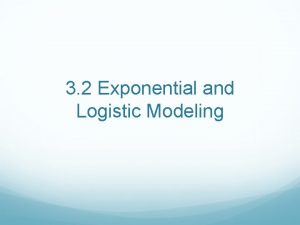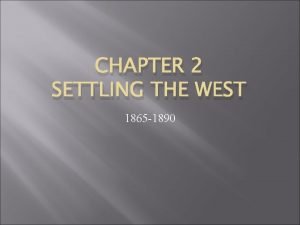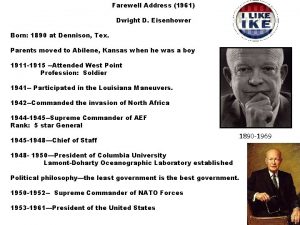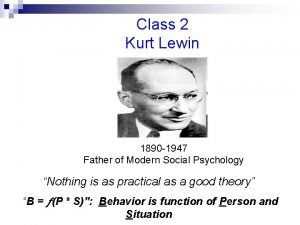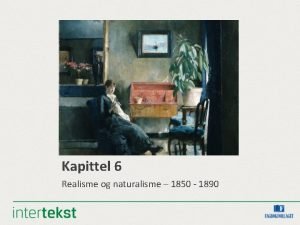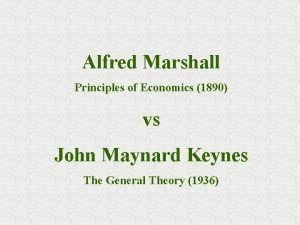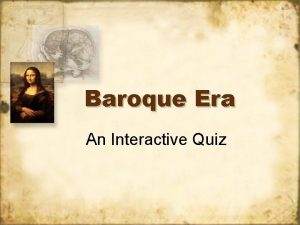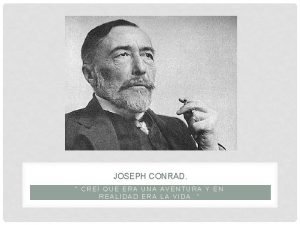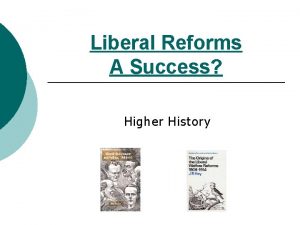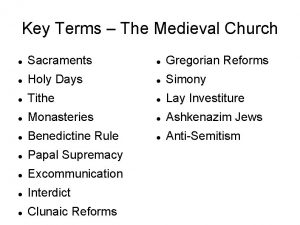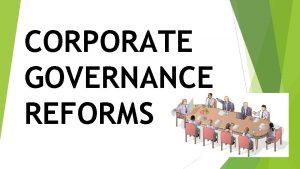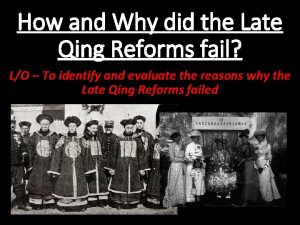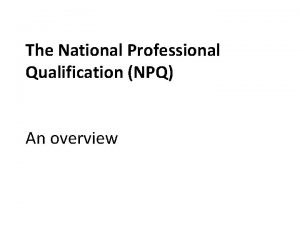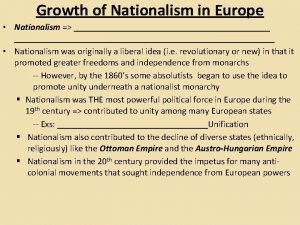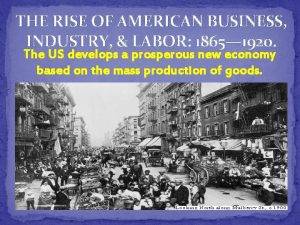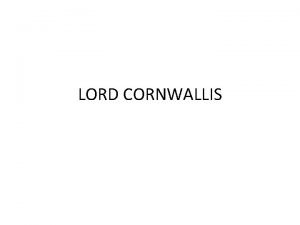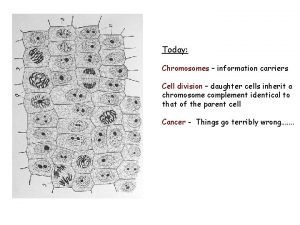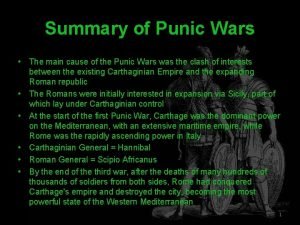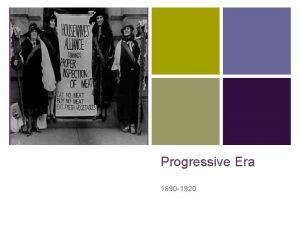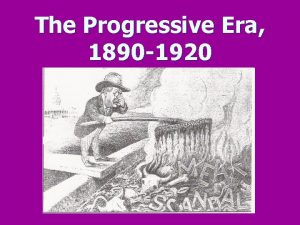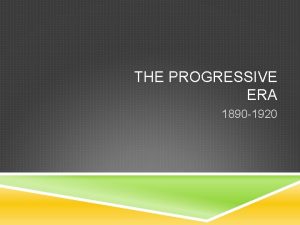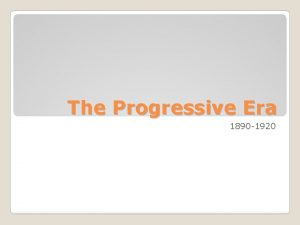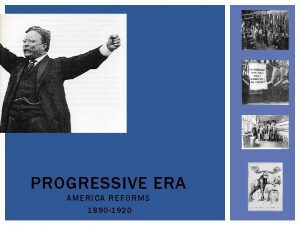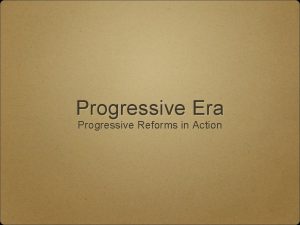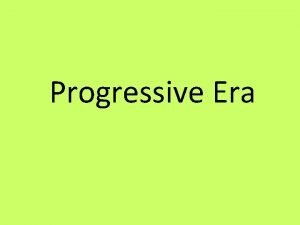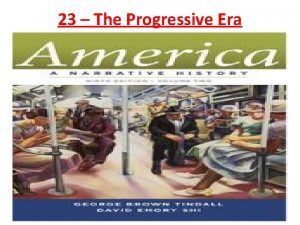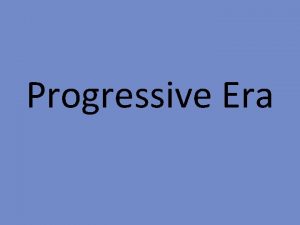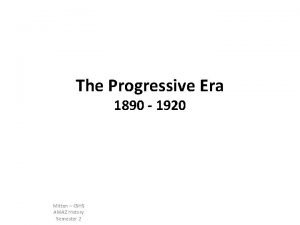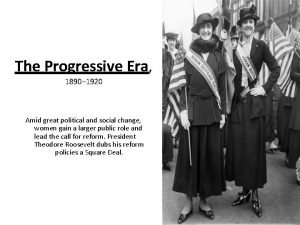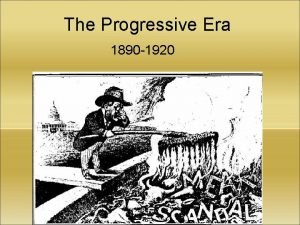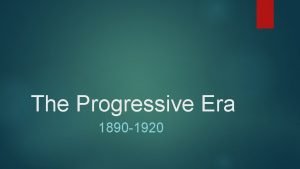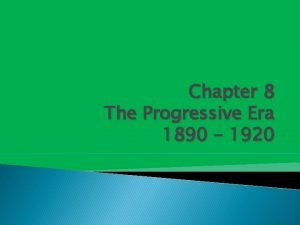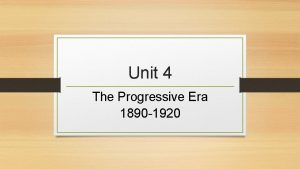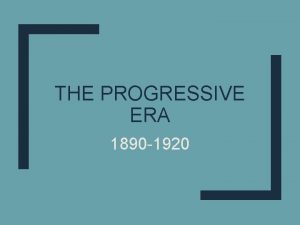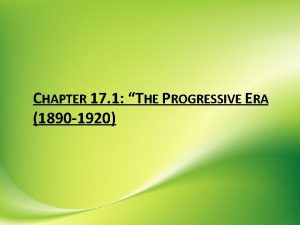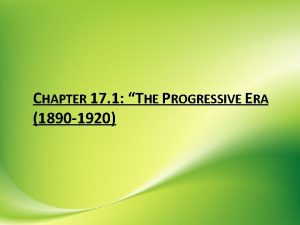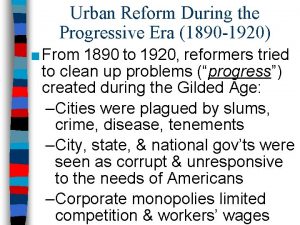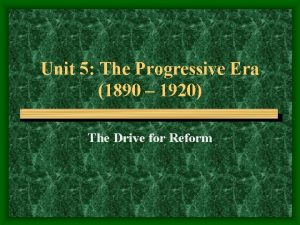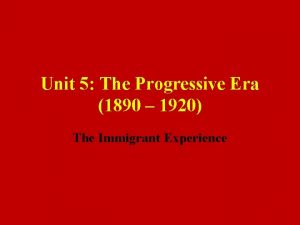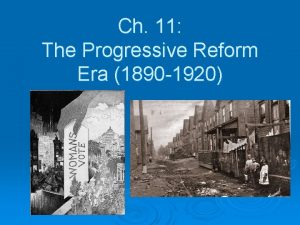Progressive Era 1890 1920 Impact of Progressive Reforms

































- Slides: 33

Progressive Era 1890 -1920: Impact of Progressive Reforms Power. Point by Mr. Hataway Original 11. 04 Revised 10. 04. 10 Revised 09. 24. 12

• Today I will learn. . . ▫ The Progressives’ Efforts to reform State and National governments. • I will learn it by. . . ▫ Listening Carefully & Taking Cornell Notes • I have learned it when I can. . . ▫ Summarize today’s notes by answering the following: “What has been the impact of Progressive Reforms? ”

Essential Question: • What inferences can you make concerning the impact of Progressive Era reforms, including initiative, referendum, recall, and the passage of the 16 th, 17 th, 18 th, and 19 th Amendments?

Defining Characteristics of the Progressive Era • Opposition to corruption and waste in government. • Concerned with social injustice. • Interested in government reform at all levels – national, state, and local. • Sought Anti-trust legislation. • Conservation of our natural resources.

Who were the Progressives? • Former populists • College-educated professionals • New Middle Class • Small business owners • Muckrakers

National Level Progressive Reforms • During the Progressive Era political reforms were initiated which gave the people more say in how their government was run and operated, resulting in a more participatory and democratic government. You do not have to write this slide down, but please pay attention for the purpose of your own understanding. Thank you.

National Level Progressive Reforms • 16 th Amendment (1913) ▫ Income Tax ▫ Purpose was to raise revenue for government programs and reduce reliance on tariffs. ▫ Originally intended to be a tax only on the wealthiest Americans. ▫ Idea introduced by Populist Party.

National Level Progressive Reforms • 17 th Amendment (1913) ▫ Direct Election of Senators ▫ Originally, Senators were chosen by State Legislatures, led to corruption through intimidation and bribery. ▫ Each State elect 2 Senators serving 6 -year terms; directly elected by the people. ▫ Introduced by Populist Party.

Why did the progressives want the direct election of senators? The United States Constitution had originally called for each state legislature to elect two senators from each state. As a result, political machines often influenced the election of senators in exchange for federal contracts and jobs. Progressives hoped the direct election of senators by all state voters would end this corruption.

National Level Progressive Reforms • 18 th Amendment (1919) ▫ Prohibition ▫ Congress “prohibited the manufacture, sale, or transportation of alcohol. ” ▫ Long sought after by the Temperance Movement.


National Level Progressive Reforms • 19 th Amendment (1920) ▫ Women’s Suffrage {vote} ▫ Congress can’t deny U. S. citizens the right to vote based on gender.

19 TH CENTURY WOMEN’S SUFFRAGE LEADERS Elizabeth Cady Stanton 1815 -1902: her Lucretia Mott 1793 -1880 daughter (Harriet E. Blatch) became a prominent suffrage leader in the 20 th century Lucy Stone 1818 -1893 Susan B. Anthony 1820 -1906

LEADERS OF THE WOMEN’S SUFFRAGE MOVEMENT IN THE 20 TH CENTURY Carrie Chapman Catt: 18591947 Maud Wood Park: 18711955 Lucy Burns 1879 -1966 Alice Paul: 18861977

State Level Progressive Reforms ROBERT La FOLLETTE AND THE WISCONSIN IDEA

State Level Progressive Reforms Robert La Follette was Elected governor of Wisconsin in 1900 on a platform of reform. Reelected in 1902 and 1904. Created the "Wisconsin Idea, " the use of professors from the University of Wisconsin-57 at one point--to draft bills and administer the state regulatory apparatus created by the new laws.

State Level Progressive Reforms The legislature enacted the direct primary in 1903 and state civil-service reform in 1905. His appointees to the Tax Commission, given new power by the legislature, equalized tax assessments. Wisconsin's leadership in these areas gave La Follette his reputation as a pioneering progressive.

State Level Progressive Reforms • Initiative ▫ Designated number of voters petition to have a measure put on the ballot to be voted on by the electorate. ▫ Many States adopted by 1920.

State Level Progressive Reforms • Referendum ▫ Vote by the electorate on an initiative or proposed statute (state law). ▫ Many States adopted by 1920.

State Level Progressive Reforms • Recall ▫ Procedure that allows voters to remove and replace a public official before the end of a term of office. ▫ Many States adopted by 1920. 2003

State Level Progressive Reforms • Direct Primary • Nomination of candidates by the vote of party members instead of party bosses. • Several States had adopted at the local level since 1870 s. Every State by 1916.

State Level Progressive Reforms • Secret Ballot • first adopted by the state of Oregon in the U. S. • Also known as the Australian Ballot. • Ballots distributed by the government and not the political parties.

Assignment: • Rank each of the reforms based on impact – from greatest impact to least impact.

New Forms of City Government

New Forms of City Government • Mayor-Council (old system) ▫ consists of a popularly elected city mayor and city council. ▫ Mayor had power to appoint and dismiss department heads without council approval. ▫ Often controlled by the “Political Machines”

New Forms of City Government • Reformers sought to make government more efficient and professional. • Two new forms of city government created by Progressives following natural disaster in the early 1900 s. ▫ Council-Manager ▫ City Commission

New Forms of City Government • Council-Manager ▫ an elected city council, which is responsible for policy making ▫ A professional city manager, appointed by the council, responsible for the administration of the city government.

CITY MANAGER FORM OF CITY GOVERNMENT GAINS POPULARITY AFTER FLOODS IN DAYTON OHIO IN 1913. A COLLEGE EDUCATED HIGHLY PAID PROFESSIONAL IS HIRED TO RUN THE CITY THIS LOWERS THE RISK OF CORRUPTION.

VICTIMS OF THE FLOOD THIS PICTURE SHOWS THE DESOLATION AND SUFFERING CAUSED BY THE FLOOD, AND THE HEROIC WORK OF THE RESCUERS WHEN THE WATERS WERE SUBSIDING. MANY SCENES OF HORROR LIKE THE ABOVE WERE WITNESSED

New Forms of City Government • City Commission ▫ Elected city commissioners act as legislators and each heads a city department. ▫ By 1917, 500 cities adopted this form of city government.

GALVESTON TEXAS: REFORM COMES FROM DISASTER In September 1900 a hurricane slammed into Galveston almost head on. Waves were higher than 15 feet and winds howled at 130 miles per hour. By the time the storm passed, more than 8, 000 people were dead, countless were injured and half of the island's homes had been swept away.


 1890 computer
1890 computer Luuletaja 1890-1952
Luuletaja 1890-1952 Ano ang pagsulat
Ano ang pagsulat The population of smallville in the year 1890 was 6250
The population of smallville in the year 1890 was 6250 Settling the west 1865 to 1890
Settling the west 1865 to 1890 Agnosia cromatica
Agnosia cromatica Born 1890
Born 1890 Exponential functin
Exponential functin What was/were the reasons why rizal stayed in london
What was/were the reasons why rizal stayed in london Kurt lewin (1890-1947)
Kurt lewin (1890-1947) Kaligirang kasaysayan sa el filibusterismo
Kaligirang kasaysayan sa el filibusterismo Albertine og et dukkehjem
Albertine og et dukkehjem Old imperialism motives
Old imperialism motives Alfred marshall principles of economics 1890
Alfred marshall principles of economics 1890 Agosto 1890 el filibusterismo
Agosto 1890 el filibusterismo 1890'lı yıllarda ingiltere'de whiff
1890'lı yıllarda ingiltere'de whiff Baroque music quiz
Baroque music quiz Elizabethan vs victorian
Elizabethan vs victorian Creí que era una aventura y en realidad era la vida
Creí que era una aventura y en realidad era la vida Vi uma estrela tão alta
Vi uma estrela tão alta Liberal reforms essay
Liberal reforms essay Clunaic
Clunaic Kumar mangalam birla committee
Kumar mangalam birla committee Chairperson of national steering committee for ncf 2005
Chairperson of national steering committee for ncf 2005 Late qing reforms
Late qing reforms Tanzimat reforms definition
Tanzimat reforms definition Laquan mckever
Laquan mckever Npqsl project examples
Npqsl project examples Tanzimat reforms definition
Tanzimat reforms definition Triangle shirtwaist factory fire led to which reforms
Triangle shirtwaist factory fire led to which reforms Lord cornwallis introduced
Lord cornwallis introduced Reforms in the antebellum period
Reforms in the antebellum period Spindle fibers
Spindle fibers What were the causes of the punic wars
What were the causes of the punic wars



